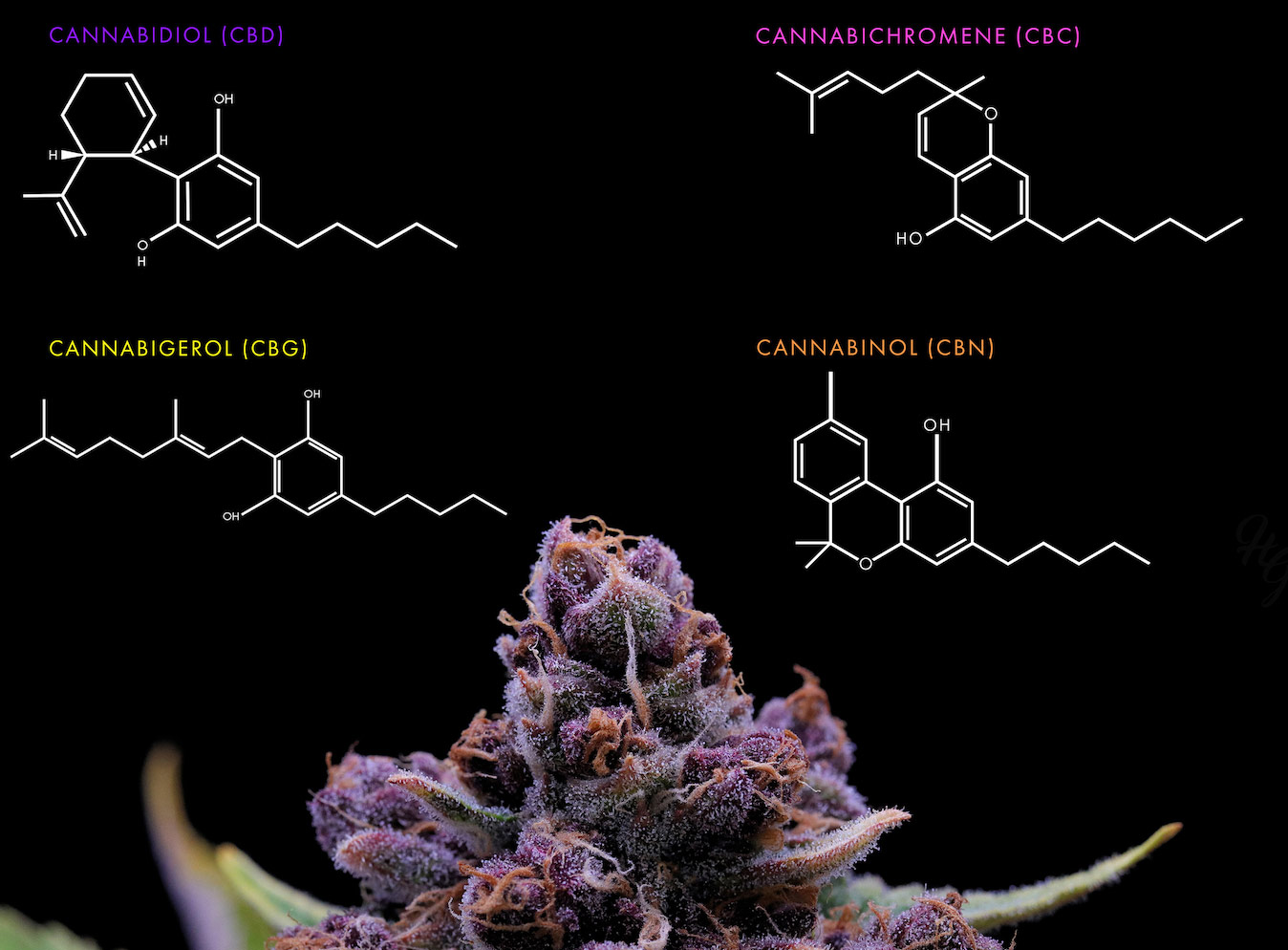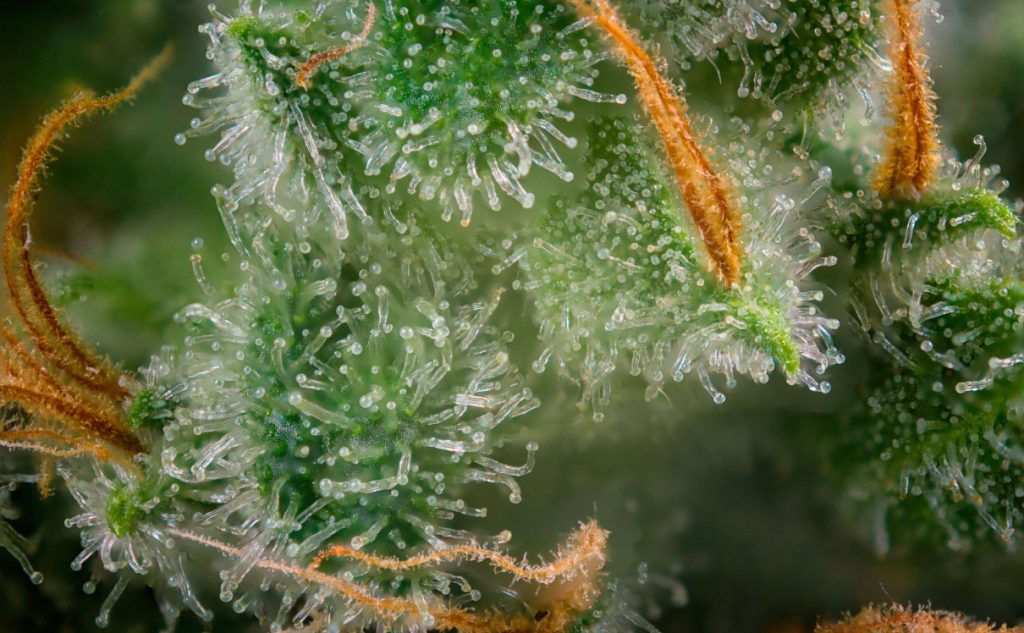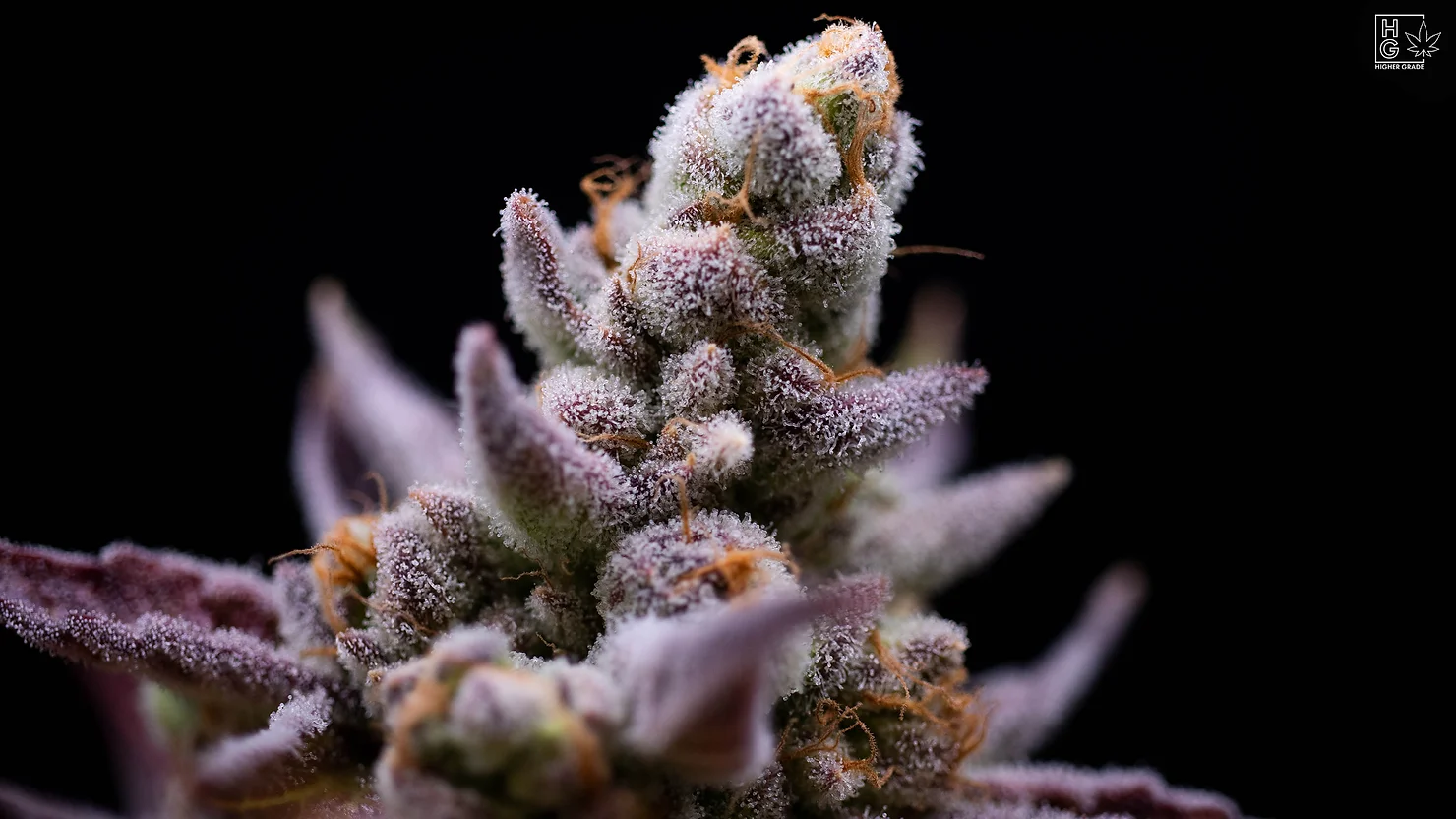Knowledge is power
Welcome to Higher Grade’s cannabis education hub, where knowledge is key to a fulfilling experience. Understanding your purchase—from strain specifics to potential effects—is essential for safe consumption. Empower yourself with insights into different strains, consumption methods, and dosages to tailor your experience. Whether seeking relief or relaxation, informed decisions enhance enjoyment and minimize risks. Explore Higher Grade’s resources to elevate your cannabis journey responsibly.
INdica/sativa & Hybrid. What does it really mean?
The terms Indica and Sativa indicate the kind of plant, its growing style, its bud and leaf structure, and the location on the Earth where the plant originated from. In the modern cannabis industry, these terms are no longer indicators of flavors or effects.
Indica and Sativa are varieties of landrace strains, meaning they are varieties of cannabis that have developed over time in their natural environment without being crossed with other types. Indica plant varieties originate from Central Asia’s cool and dry mountainous regions, Afghanistan, Pakistan, Northern India, Tibet, and Nepal.
Indica plants are short and bushy with thick leaves and minimal space on the branches between the buds. The dried buds from Indica plants are tight, round, and dense.
Sativa varieties originated in the sunny and moist equatorial regions of Africa, Southeast Asia, North America, and South America. Sativa plants are tall with skinny leaves and plenty of space between the nodes.
The dried buds of Sativa plants are fluffy, loose, and elongated.
When a landrace Sativa variety cross-breeds with a landrace Indica variety, the result is a Hybrid strain.
Hybrid varieties can display characteristics of both Sativa and Indica, sometimes favoring one type over the other.
Over time, humans bred and manipulated landrace varieties to produce strains with the desired bud structure, flavor, aroma, environmental resilience, medicinal value, or psychoactive potency. These are known as heirloom strains. The majority of cannabis strains available today are hybridized varieties of landrace and heirloom strains bred together over time to produce flowers with desired characteristics.
A true Indica or Sativa strain is extremely rare today, and it is safe to assume that almost every strain today is a Hybrid.
Effects of THC
Changes in perception, mood, consciousness, and behavior, psychoactive Antispasmatic, anticonvulsant, anti-inflammatory, appetite stimulating, antiemetic, sedative, anticancer, bronchodilator
potency
When we discuss the potency of our Higher Grade strains, we are referring to the Total THC percentage. According to the US Department of Agriculture’s 2019 Hemp Rules, a sample’s “Total THC” potency is calculated at a conversion rate of 87.7% THCA to THC.
Phytochemicals
THC
THC is the most active of all cannabinoids, and it’s the molecule responsible for the feeling of being
“high.” THC can activate CBI and CB2 endocannabinoid recepior
and other receptors in the body, making it very pharmacologically (medicinally) powerful. In addition, THC is a psychoactive cannabinoid, and by activating specific CB1 receptors in our central nervous system, it can affect temporary changes in perception, mood, consciousness, and behavior. Consumption of THC can be intoxicating, inducing feelings of euphoria and enhanced senses.
Studies of the use of isolated THC have shown it can offer relief from muscles spasms, convulsions, pain, and inflammation, with 20 times the antirinflammatory power of aspirin and double the power of hydrocortisone. Additionally, THC is a bronchodilator (opens the lungs) and a neuroprotective antioxidant (targets oxidative stress in the brain to protect neurons). THC can stimulate the appetite by binding to and activating CB1 receptors in the brain and gut dealing with hunger, satiety, and food palatability. THC can reduce nausea and vomiting by activating specific CB1 receptors in the brain and stomach. THC has the potential to be very sedative by activating CB1 receptors that deal with our cycadean rhythm. Studies of isolated THC show it is valuable in cancer treatment for its palliative, appetitestimulating, and antiemetic power and its antitumor activity.
While THC has a rich therapeutic value, it can cause unwanted side effects when consumed in significant amounts. For example, after smoking THC-rich cannabis or eating a potent edible, some people report feeling anxious and paranoid. THC is also known to cause short-term memory loss, as it temporarily reduces the activity of the neurotransmitter acetylcholine in the
CBD
CBD is the most commonly found phytocannabinoid in hemp varieties, with smaller amounts found in modern cannabis strains. CBD is a powerful cannabinoid; however it is not psychoactive or mind-altering like THC. CBD does not directly activate CB1 receptors like THC, and when consumed together, CBD can block CB1 receptors, reducing THC’s ability to stimulate them. As a result, CBD can help mitigate the adverse effects of too much THC, like memory loss, elevated heart rate, hunger, and anxiety. CBD is not directly active at our CB2 receptors either. Howeyer, by regulating the absorption of our endocannabinoids, CBD can slow down activity at. our CB2 receptors, decreasing inflammation and soothing the body. CBD also interacts with our opioid, serotonin, and dopamine receptors by regulating chemical uptake in the body.
Effects of CBD
Anti-nausea and vomiting, neuroprotective, antioxidant, antifungal, antibacterial, acne-fighting, pain perception and pain relief, anti-inflammatory, anti-convulsant, cancer-fighting.


CBN
Effects of CBN
Powerfully sedative, mildly psychoactive, anticonvulsant, anti-inflammatory, promotes bone growth, hormone stimulation
CBG
Effects of CBG
Anti-cancer, reduces eye pressure (treatment for glaucoma), antifungal, antibacterial, reduces contractions in bladder disorders, reduces oxidative stress.


CBC
It binds poorly to CB1 receptors in the brain and does not produce psychoactive effects. CBC interacts very well with the receptors in the body that handle pain perception. Like CBD, CBC slows down the absorption of endocannabinoids, allowing more to remain in the bloodstream.
Effects of CBC
Increased brain function, anti-anxiety, anti-depressant, anti-inflammatory, neuroprotective, and acne-fighting.
Terpenes
Terpenes play a significant role in the way we experience cannabis. The distinct and unique aromas of cannabis that we know and love come from aromatic oils secreted in the trichomes, called terpenes. Terpenes exist in many kinds of plants beyond cannabis and a few types of insects. In plants, terpenes have an important evolutionary function, as these aroma-heavy oils developed over time to ward off herbivores, attract predator insects that feed on a plant’s “enemies,” and attract pollinators.
Cannabis plants are known to produce well over 100 different terpenes in varying concentrations and combinations. The terpene content and concentration in a cannabis plant will vary depending on the location on the plant where it’s synthesized. Exposure to light, moisture, and temperature changes also affect terpene content and concentration during the growing cycle, harvesting, and processing methods. When you observe a strong aroma upon opening a jar of flower, it’s the terpenes rapidly escaping into the air. Terpenes dissipate very quickly and are the first molecules to vaporize when heat is applied to cannabis.
Terpenes are very pharmacologically active and interact with our lipids, cell membranes and membrane receptors, ion channels, neurotransmitter receptors, second messenger systems, and enzymes. Upon consumption, terpenes are rapidly absorbed into the bloodstream through our fat cells, some even permeating the blood-brain barrier through inhalation. While there are over 100 terpenes produced in cannabis, only a few show up consistently in our terpene content test results. The predominant terpenes found in Higher Grade’s flower are Pinene, Myrcene, Limonene, Caryophyllene, Linalool, Humulene, and Bisabolol.
Pinene
 Terpenes play a significant role in the way we experience cannabis. The distinct and unique aromas of cannabis that we know and love come from aromatic oils secreted in the trichomes, called terpenes. Terpenes exist in many kinds of plants beyond cannabis and a few types of insects. In plants, terpenes have an important evolutionary function, as these aroma-heavy oils developed over time to ward off herbivores, attract predator insects that feed on a plant’s “enemies,” and attract pollinators.
Terpenes play a significant role in the way we experience cannabis. The distinct and unique aromas of cannabis that we know and love come from aromatic oils secreted in the trichomes, called terpenes. Terpenes exist in many kinds of plants beyond cannabis and a few types of insects. In plants, terpenes have an important evolutionary function, as these aroma-heavy oils developed over time to ward off herbivores, attract predator insects that feed on a plant’s “enemies,” and attract pollinators.
Cannabis plants are known to produce well over 100 different terpenes in varying concentrations and combinations. The terpene content and concentration in a cannabis plant will vary depending on the location on the plant where it’s synthesized. Exposure to light, moisture, and temperature changes also affect terpene content and concentration during the growing cycle, harvesting, and processing methods. When you observe a strong aroma upon opening a jar of flower, it’s the terpenes rapidly escaping into the air. Terpenes dissipate very quickly and are the first molecules to vaporize when heat is applied to cannabis.
Terpenes are very pharmacologically active and interact with our lipids, cell membranes and membrane receptors, ion channels, neurotransmitter receptors, second messenger systems, and enzymes. Upon consumption, terpenes are rapidly absorbed into the bloodstream through our fat cells, some even permeating the blood-brain barrier through inhalation. While there are over 100 terpenes produced in cannabis, only a few show up consistently in our terpene content test results. The predominant terpenes found in Higher Grade’s flower are Pinene, Myrcene, Limonene, Caryophyllene, Linalool, Humulene, and Bisabolol.
Flavor: sweet, delicate, apple, citrus, spice
Feelings: soothing, calming, relaxing
Therapeutic Value: anti-inflammatory, antimicrobial, anti-anxiety, antidepressant, increased skin permeability, antiparasitic, kidney health
Myrcene

Myrcene is a terpene found in most modern cannabis strains, even if in small concentrations. It’s terpene responsible for the distinct “skunky” and earthy aroma that most people associate with cannabis. Myrcene also carries sweet, musky scents, like sour dairy and overripe fruit. High concentrations of Myrcene are in hops, a genetically similar cousin of cannabis that provides the bitter, earthy aroma in beer. Lemongrass, thyme, bay leaves, basil, and mangoes all have significant levels of Myrcene. Anecdotal accounts of eating mangoes before cannabis consumption claim it intensifies the high. The boost in psychoactive effect is most likely due to Myrcene’s ability to increase blood-brain barrier permeability, allowing for more rapid absorption of THC.
Therefore, when cannabis strains contain high levels of Myrcene, it will potentiate or enhance the psychoactive effects of THC.
Myrcene is a highly sedative or tranquilizing terpene, making it a helpful sleep aid. The “couch-lock” feeling traditionally associated with smoking Indica strains is now connected to the presence of high levels of Myrcene.
Studies of Myrcene show it can target inflammation and act as a muscle relaxer.
In addition, it acts as an antibiotic, antimutagenic, antioxidant, and anticancer agent. While most strains contain some amount of Myrcene, those with the highest concentrations tend to have Landrace Indica varieties in their lineage.
Flavor: earthy, skunky, musky, ripe fruit, lemongrass
Feelings: sedative, mildly psychoactive, increased high
Therapeutic Value: sleep aid, antibiotic, antioxidant, anticancer agent
Caryophyllene

Beta-Caryphyllene or Caryophyllene is naturally present in many herbs and spices like black pepper, basil, and oregano and provides spicy, warm, peppery aromas similar to cinnamon and cloves. Caryophyllene is the primary aromatic element of copaiba balsam, an essential oil traditionally used in South America as an oral and topical anti-inflammatory. Caryophy lene forms strong bonds at our CB2 receptors in our Endocannabinoid System (ECS).
It is the only terpene known to demonstrate this type of bonding relationship with endocannabinoid receptors, which is the mechanism behind Caryophyllene’s ability to relieve anxiety, depression, pain, and inflammation symptoms.
Bonding with our CB2 receptors also allows Caryophyllene to serve as a gastroprotective agent, protecting the mucus layer in the stomach without affecting stomach acid production. In addition, Caryophyllene can have a neuroprotective effect against nervous system disorders, such as alcoholism and Alzheimer’s disease. Studies have shown Caryophyllene to be an antihistamine as well as an anti-malarial.
Caryophyllene can act as an anticancer agent by increasing the effective cancer-fighting medicines, inhibiting the proliferation of cancerous cells, and encouraging cancer cell death. Because of its powerful and direct activity with our ECS, Caryophy lene is a very medicinal terpene with great therapeutic value.
Flavor: spicy, peppery, warming, cinnamon, clove
Feelings: soothing to the mind and body
Therapeutic Value: Direct activity with ECS, pain relief, anti-inflammatory, antidepressant, anti-anxiety, gastric relief, neuroprotectant, antihistamine, anti-malarial, anticancer agent
Limonene

Limonene is the terpene responsible for the intense citrus elements in the aroma of many cannabis strains. Limonene exists in the rinds of lemons, limes, grapefruits, oranges, and juniper, and mint. Limonene is highly bio-available, meaning easily absorbed into the bloodstream. Because of its bioavailability, Limonene rapidly stimulates the olfactory system and has direct cellular action. Many citrusy essential oils are known to lift the mood upon inhalation, which contain Limonene as their primary element. Studies show Limonene can relieve stress and depression and reduce OCD-related behaviors via oral ingestion and inhalation.
The presence of Limonene has a direct effect on serotonin and dopamine levels in the body, which may account for its powerful impact on mood levels.
Limonene has robust free-radical scavenging properties and is considered an antioxidant. It has a neutralizing gastric-acid effect, supports normal digestive function, and treats heartburn and acid reflux. Its anticancer properties are observed in multiple scenarios.
Limonene can block the carcinogenesis induced by the tar created from smoking cannabis. Other studies demonstrate Limonene can cause apoptosis or cell death of breast cancer cells. Studies of Limonene show it can offer protection from different types of cancer like lung, liver, colon, pancreas, and skin. Limonene is widely known to be antifungal and antibacterial, explaining why citrus-rich essential oils are common in cleaning products.
Flavor: zesty citrus, fresh, diesel fuel, juniper
Feelings: mood uplifting, energizing, depression relief
Therapeutic Value: highly bio-available, stress relief, antidepressant, antioxidant, digestive aid relieve heartburn, anticancer, antibacterial, antifungal
Linalool

Linalool is a floral terpene found naturally in flowers like lavender and rose and herbs like basil and coriander. It is the main component of lavender essential oil, used as a calming agent in aromatherapy and a healing agent in wound treatment. In lab tests of over 40 different terpenes, Linalool proved to be the most sedative upon inhalation, also providing relief from ailments like stress, anxiety, and depression when inhaled.
Anecdotal accounts claim diffusing lavender oil into the air while smoking cannabis can increase the calming and soothing effects of the herb. Linalool is active against pain by targeting inflammation, desensitizing pain perception, and acting as a local anesthetic. In addition, Linalool can reduce seizures and convulsions by calming the nervous system.
Linalool is a neuroprotective antioxidant. It can protect neurons, preserve mitochondrial function, and regulate the toxicity that leads to neurogenerative disorders like MS, Alzheimer’s, OCD, and depression.
Linalool is useful for topical wound treatment because of its antimicrobial and anti-inflammatory effects and its ability to discourage scar tissue formation. In terms of its anticancer activity, Linalool can positively fight against colon cancer, Leukemia, cervical cancer, and prostate cancer.
Flavor: floral, spicy, wood, French lavender, bergamot oil, light citrus, sweet, tropical
Feelings: sedative, soothing, calming
Therapeutic Value: relief from stress, anxiety relief, antidepressant, pain relief, anti-inflammatory, neuroprotective, reduction of seizures and convulsions, topical wound treatment, anticancer
Humulene

Humulene is a close chemical cousin of Caryophyllene, differing in molecular structure. It is the characteristic terpene in hops and is also naturally found in sage, balsam fir trees, coriander, ginseng, and ginger. In cannabis, Humulene often takes a backseat to the aromas of other terpenes, offering a more subtle earthy, herbal, gingery, and floral scent. Our third-party terpene testing shows, if a strain has significant levels of Humulene, it almost always has high levels of Caryophy lene. Even though they are chemically related, Humulene does not have activity at our CB2 receptors like Caryophy lene.
Despite the lack of CB2 activity, Humulene targets inflammation both topically and internally. Additionally, Humulene can reduce inflammation and swelling characteristic of histamine (allergic) reaction. As a pain reliever, Humulene is active orally, topically, and via inhalation. Its cancer-fighting power lies in Humulene’s ability to aid in the damage and death of cancer cells. Significant evidence suggests that the presence of Caryophyllene potentiates Humulene’s anticancer effects.
Many anecdotal accounts of Humulene acting as an anorectic or appetite suppressing agent suggest it can aid weight loss. The loss in hunger probably has a connection to the terpene’s ability to lower blood sugar levels. There is a need for more research concerning Humulene and its effect on appetite.
Humulene is anti-bacterial, and anti-fungal when applied topically.
Additionally, it is a natural insecticide, with studies showing it to be toxic to the eggs of several known Malaria carrying mosquitos.
Flavor: herbal, earthy, floral, ginger
Feelings: soothing to the body, loss in appetite
Therapeutic Value: pain relief, anti-inflammatory, weight loss aid, antihistamine, anticancer, topical antibacterial and antifungal, insecticide
Bisabolol

Bisabolol is a floral forward terpene with an aroma like chamomile, its most closely connected plant. Its scent is delicate and sweet, with hints of citrus, spice, and apple. Additionally, much like chamomile, Bisabolol can relieve and soothe anxiety, insomnia, and depression.
For years Bisabolol has been used in the cosmetic industry for its skin healing properties. It is beneficial in topicals, as it helps other solutions penetrate the skin, making the topical product more effective.
Applied topically, Bisabolol has antimicrobial and anti-inflammatory properties. When taken orally, it can act as an antiparasitic and actively aid in healthy kidney function. Bisabolol is present in small amounts in most of our strains but is very pronounced in our Papaya Punch.
Flavor: sweet, delicate, apple, citrus, spice
Feelings: soothing, calming, relaxing
Therapeutic Value: anti-inflammatory, antimicrobial, anti-anxiety, antidepressant, increased skin permeability, antiparasitic, kidney health
